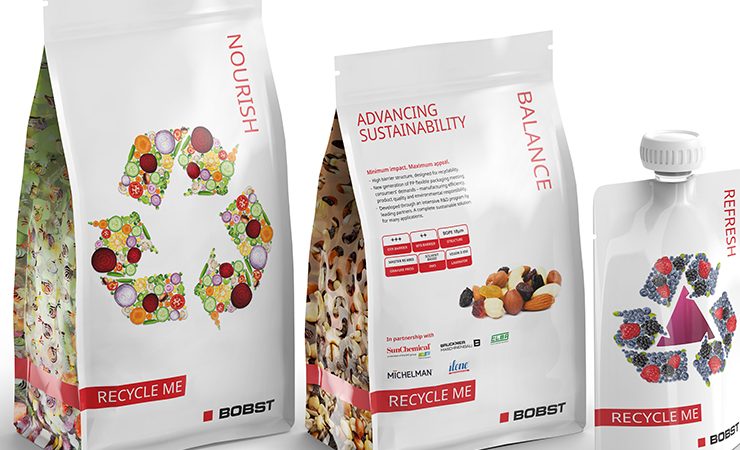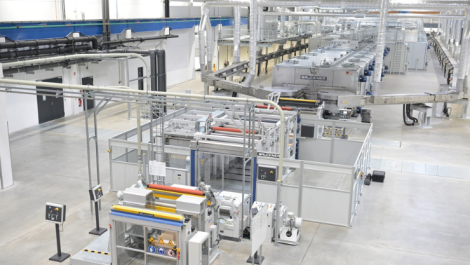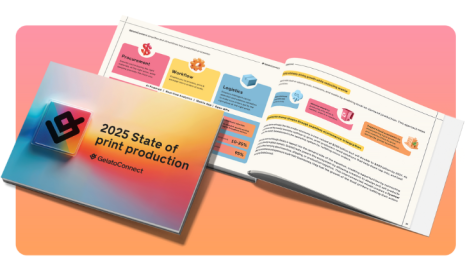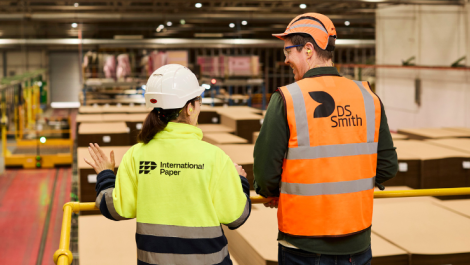A network of packaging industry partners have launched their latest innovations in a series of high-barrier flexible packaging options designed for recyclability.
This project has seen Bobst team up with Dow, Brückner Maschinenbau, Hosokawa Alpine, Elba, Sun Chemical, Michelman, Indopoly and UFlex.
After several different samples of mono-material stand-up pouches were shown at K 2019, the partners involved continued their investment and intense research to progress the samples even further, to ensure all industry requirements are met in terms of processability, barrier, safety and optical quality.
The partners have now reached a key milestone in their work to replace non-recyclable high-barrier multi-material packaging structures with mono-material alternatives designed for recycling. The launch of a new generation, Generation 2.0, of Bobst hero samples represents a ‘significant achievement’ in the mission to deliver state-of-the-art options utilising a new generation of polymers.
Generation 2.0 samples include:
- UV low migration flexo printing on full low-density polyethylene laminated pouches providing barrier with AluBond metallisation;
- CI flexo water-based printing on full MDO-PE laminated pouches with AluBond metallisation, providing ultra-high barrier using a high barrier solventless adhesive;
- The first ever UV flexo combined with digital inkjet printing on full polypropylene laminated bags with AluBond metallisation and barrier performances, using a solventless adhesive again for a mono-material pouch designed for recycling; and
- Ultra-high and high-barrier full polypropylene laminated pouches, printed in gravure and recyclable, with the option of an AluBond metallised barrier or transparent aluminium oxide (AlOx) barrier layer and solvent-free barrier adhesive and/or topcoat.
Nick Copeland, R&D director at Bobst, said, ‘Finding sustainable alternatives to non-recyclable plastics is one of the most important challenges of our times. It is a particular challenge for flexible packaging such as that used for food packaging, where the high-barrier protection against oxygen and water that prevents deterioration is currently provided by multi-layer, multi-material packaging, which cannot be recycled.
‘This next generation of high-barrier monomaterial structures brings us one step closer to being able to provide completely recyclable solutions to replace non-recyclable packaging.’
He continued, ‘This is a partnership of like-minded companies, who are all determined to develop sustainable alternatives to non-recyclable flexible packaging. The Bobst competence centres are used to test the viability of the materials in terms of their barrier, printing and lamination, to ensure they can cope throughout the production process. We are thrilled to contribute to this important milestone.’






